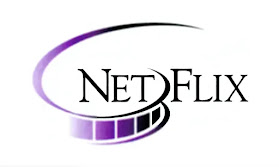New innovation catches on when it has been proven successful, and big influencers and public figures advertise it. No matter the product, it will not be successful at first because buyers need proof that what they are using or spending their money on is worth it and not a scam. Moreover, the first version of the innovation could need modifications to improve it.
This happened to Netflix when it first started in the late 2000s; as Ellen Merryweather states, "Netflix, which was growing pretty nicely in the mid-to-late 2000s, decided to split itself in two. They split their $10 offering into an $8 streaming and $8 mailed DVD plans. This increased the price by 60% for users who wanted to keep both."
Merryweather continues to t
alk about "what Netflix had failed to understand was how important their relationships with their customer base were. To fix the problem, Netflix had to become obsessed with its customers and listen to what they wanted. They used their extensive amounts of data to inform creative decisions, leading to a powerhouse of Oscar-winning original content."
On the other hand, those may be the cases for some people catching on, but most of the time, new innovations "blow up" because they become a trend that most people want to follow and be a part of. An example is when Ryan Reynolds bought the company Mint Mobile and was in the advertisements.
Mindy Weinstein states, "renowned actor and film producer Ryan Reynolds made the news when he and Mint Mobile became involved. He started by partnering with Mint Mobile and later went into November 2019 to buy the entire company. Mint Mobile, a four-year-old company, has seen tremendous growth in the past three years: its revenue has been boosted by 50,000%." Therefore, the fans of Ryan Reynolds started using Mint Moile because Reynolds owns the company, thus using it, and they want to be the early adapters to his projects.
Some people are early adapters to new innovations because they want to experience the trend before it becomes widespread, are loyal followers of the company or person advertising, or are interested in trying the newly invented innovation. As Will Kenton puts it, "early adopters are the class right after innovators in using new technology. Like innovators, early adopters have greater access to wealth, are younger in age, and have higher education. They are more selective in adopting new technology and become opinion leaders on new innovations."
The pros are "prestige, some influence on developing the technology, gaining a competitive advantage, becoming a thought leader on the tech." The cons are "limitations in applicability, risk of utilizing soon to be the obsolete product, high price for new technology, loss of value, higher risk of defects," listed by Kenton.I would rather not be an early adapter because, for me, the pros outweigh the pros. Now, if you are interested in technology and working with new technology, then it is a perfect way to expose yourself to hands-on experience. That said, I do not desire to work in that line of work and would not like to risk my money so I can access the newest thing.




No comments:
Post a Comment